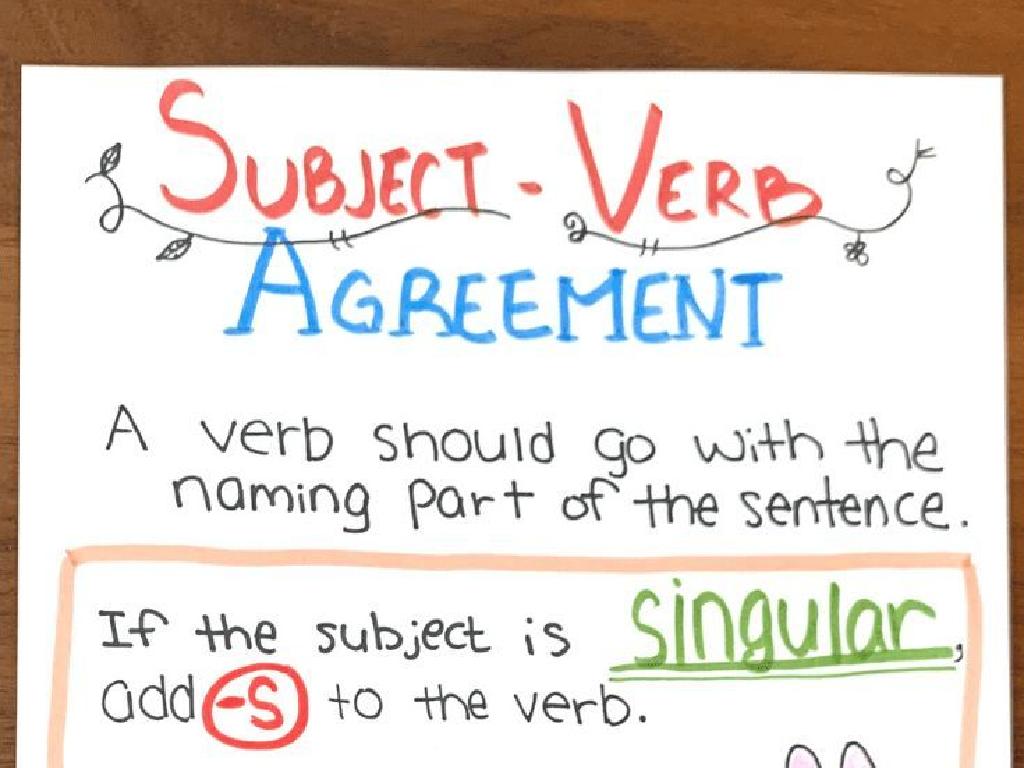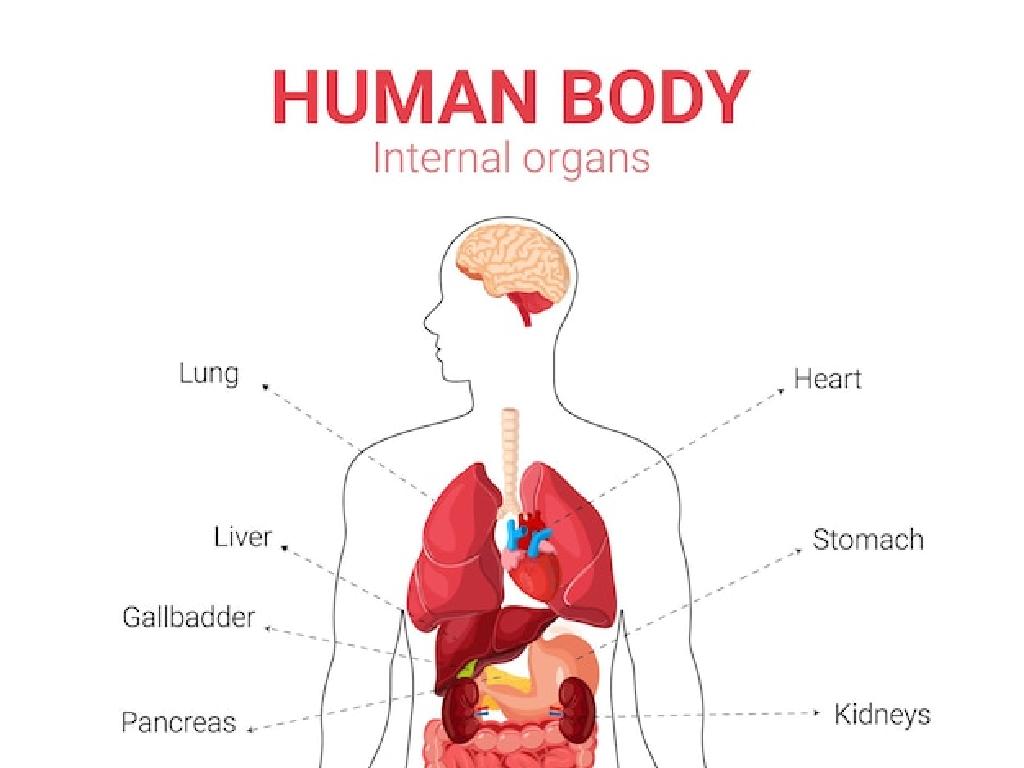Read Sight Words Set 7: Am, Did, Get, Now, Well
Subject: Language arts
Grade: First grade
Topic: Sight Words
Please LOG IN to download the presentation. Access is available to registered users only.
View More Content
Welcome to Sight Words!
– Sight words are common words
– They help us read smoothly
– Today’s words: am, did, get, now, well
– Examples: I am happy. What did you do? Can I get a toy? Do it now. You did well.
– We’ll practice reading and using them
– We’ll use games and activities for practice.
|
This slide introduces the concept of sight words to first graders, emphasizing their importance in achieving reading fluency. Sight words are frequently encountered in text and can often be difficult to sound out, making them essential for students to recognize on sight. Today’s focus is on the words ‘am,’ ‘did,’ ‘get,’ ‘now,’ and ‘well.’ Use interactive activities such as flashcards, matching games, and fill-in-the-blank sentences to help students memorize and practice these words. Encourage the students to use these words in sentences to understand their meaning and context better. The goal is for students to be able to recognize these words instantly and understand their usage in everyday reading.
Sight Words Set 7: Quick Reading Tools
– Sight words appear often in texts
– They may break spelling rules
– For example, ‘said’ doesn t sound like it looks.
– Memorization aids reading fluency
– Recognizing ‘am, did, get, now, well’ helps read faster.
– Set 7: am, did, get, now, well
|
This slide introduces sight words, which are common words that often don’t follow standard phonetic rules and are best learned through memorization. Understanding these words on sight can significantly improve reading speed and fluency, which is crucial for young readers. Focus on the words ‘am,’ ‘did,’ ‘get,’ ‘now,’ and ‘well’ from set 7. Encourage students to recognize these words without sounding them out, which will help them read more smoothly. You can use flashcards, games, and repetitive reading exercises to reinforce these words in class.
Sight Word Practice: ‘am’
– ‘am’ is used for self-description
– Example: ‘I am happy’
– Use ‘am’ when talking about yourself, like ‘I am a student’
– Practice saying ‘am’
– Repeat after me: ‘I am…’
– Create our own ‘am’ sentences
– Think of something you are and use ‘am’ to tell us!
|
This slide introduces the sight word ‘am’, which is a present tense verb used when speaking in the first person. Start by explaining the context in which ‘am’ is used, emphasizing that it’s for talking about oneself. Provide the example ‘I am happy’ and ask the students to repeat it. Then, engage the class by having them say ‘am’ in unison. Finally, encourage the children to get creative and make their own sentences using ‘am’, which will help them understand the usage of the word in various contexts. For instance, they might say ‘I am excited’ or ‘I am playing’. This activity will reinforce their understanding and give them confidence in using the word ‘am’ correctly.
Sight Word: ‘did’
– ‘did’ is a past action word
– It means something happened already
– Example: ‘She did her homework’
– ‘did’ shows action that is completed
– Think of a past action you did
– Use ‘did’ to talk about yesterday or earlier today
– Share your ‘did’ sentence with the class
|
The focus of this slide is to teach the sight word ‘did’, which is a past tense verb. Start by explaining that ‘did’ is used to talk about actions that have already happened. Use the example provided to illustrate how ‘did’ is used in a sentence. Then, engage the students by asking them to think of something they did today or yesterday, encouraging them to use the word ‘did’ in their sentences. This will help them understand the concept of past actions and how to use the word in context. Have a few students share their sentences with the class to reinforce learning and build confidence in using the word ‘did’.
Learning Sight Word: ‘get’
– ‘get’ means to receive something
– When someone gives you something, you ‘get’ it
– Example: ‘I will get a sticker’
– If you behave, you might ‘get’ a reward
– Ask: What do you like to get?
– Think of a toy or treat you ‘get’ excited about
– Practice using ‘get’ in sentences
|
The word ‘get’ is a common sight word that first graders should recognize without sounding out. It’s used when talking about receiving or obtaining items. Start by explaining the meaning, then show the example sentence to illustrate its use. Encourage students to think of things they like to receive, which makes the learning personal and memorable. Finally, have them practice making their own sentences with ‘get’ to reinforce their understanding. This activity will help them recognize and use the word ‘get’ confidently in various contexts.
Sight Word: ‘now’
– ‘Now’ means this moment
– Example: We are learning now
– Shows something is happening currently
– Ask: What are you doing right now?
– Encourages to use ‘now’ in a sentence
|
The word ‘now’ is a common sight word that indicates something is happening at the present moment. It’s important for first graders to recognize and understand the use of this word in sentences. Start by explaining the meaning of ‘now’ with examples. Then, engage the students by asking them to share what they are doing ‘now’ to reinforce the concept. Encourage them to think of other sentences where ‘now’ can be used. This interactive approach helps students to connect the word to their immediate experiences and understand its usage contextually.
Sight Word: ‘well’
– ‘Well’ means good health
– ‘Well’ as doing good
– Example: ‘She sings well’
– Use ‘well’ to describe a skill done properly
– When have you felt ‘well’?
– Share a personal story of feeling healthy or happy
|
The word ‘well’ is versatile and can describe both a state of health and the quality of an action. Start by explaining the different meanings of ‘well’ and provide the example sentence to illustrate its use. Encourage students to think of times they’ve felt ‘well’ in terms of health or when they’ve done something ‘well,’ like drawing a picture or helping a friend. This personal connection helps solidify the word’s meaning and usage in their vocabulary. During the next class, allow students to share their experiences to foster a collaborative learning environment.
Practice Time: Sight Words Set 7
– Write ‘am’, ‘did’, ‘get’, ‘now’, ‘well’ on the board
– Create fun sentences with each word
– ‘I am happy’, ‘She did her homework’, ‘Can I get a cookie?’, ‘Now is the time’, ‘You did well on the test’
– Practice reading the words and sentences
– Read aloud to recognize and remember
– Repeat for mastery
|
This slide is designed for an interactive class activity focused on sight words set 7. Start by having the students write the words ‘am’, ‘did’, ‘get’, ‘now’, and ‘well’ on the board to visualize them. Then, engage the class by asking them to come up with creative and fun sentences using each word, which will help in understanding the context in which these words are used. Encourage the students to practice reading the words and the sentences they’ve created out loud, as this will aid in memorization and pronunciation. Repeat the activity to ensure the students are comfortable with the words. For students who may struggle, consider pairing them with a buddy for practice or provide additional examples and one-on-one time.
Sight Word Bingo Game
– Play Bingo with sight words
– Listen and cover known words
– Use beans or buttons to cover words
– Shout ‘Bingo!’ when all covered
– Have fun and learn new words
– Words include: am, did, get, now, well
|
This slide introduces a fun classroom activity, Sight Word Bingo, to help first graders recognize and memorize sight words set 7: am, did, get, now, well. Prepare bingo cards with a mix of sight words from the current and previous sets. Explain the rules clearly, emphasizing the importance of listening carefully and recognizing the words. Encourage students to cover the words with beans, buttons, or any small objects. Celebrate the winners and ensure everyone is engaged and learning. Possible variations of the game could include ‘Four Corners Bingo’, ‘Blackout Bingo’, or ‘Rhyme Time Bingo’ where students cover words that rhyme with the called word.
Fantastic Work on Sight Words!
– Proud of your learning today
– Practice sight words at home
– Try using ‘am’, ‘did’, ‘get’, ‘now’, ‘well’ in sentences
– More words in our next class
– We’ll read a story together
– Exciting storytime awaits us!
|
This slide is meant to congratulate the students on their hard work during the lesson and to encourage them to continue practicing at home. Reinforce the importance of repetition in learning sight words. Provide suggestions for parents on how to practice with their children, such as using flashcards or incorporating the words into daily conversations. Prepare for the next class by selecting a story that includes some of the sight words learned, which will help students recognize these words in context and understand their usage better.






